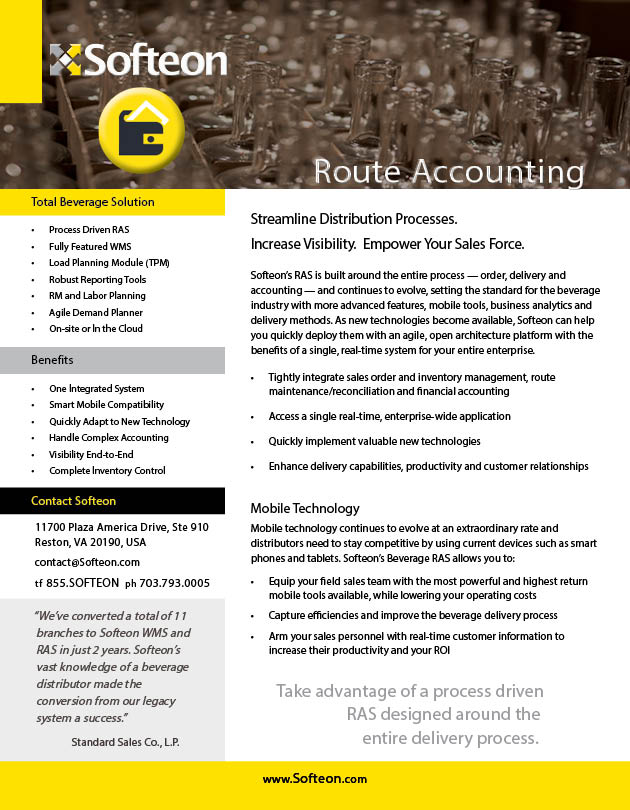Warehouse Management Systems (WMS) have been around a long time. From an analyst’s point of view, WMS is a “mature” product category – by which they often mean there is not a whole lot of development that still needs to be done or new features to should be added.
Similarly, the largest WMS companies have generally stopped investing much in core WMS. Their R&D is going to things like creating new, more modern technology platforms, or solutions outside the WMS itself to grow the footprint of their full product suites.
Conversely, I believe there is still a lot of improvement that can be made to the WMS itself – if you know where to look.
Let me first note that fortunately, Softeon does not need to invest much in rebuilding an integrated technology platform. We’re had that from the beginning: an SOA-based, web-native, Cloud-ready platform that supports every single Softeon product. It is a real advantage for us and our customers. More on that in a future blog.
And we certainly have developed a broad suite of both execution and now planning modules, with as rich a solution footprint as anyone in the industry. Beyond WMS, TMS and labor management, Softeon offers order management, distributed order management (DOM), forecasting, scorecarding and analytics, a unique short term planning and fulfillment module, and more.
But despite all that, we continue to invest in our core WMS, because there is still much opportunity for greater operational efficiencies and improved ease of use even in this “mature” product category.
Some examples? Let’s start with our recent introduction of WMS Cloud. This isn’t just a web-enabled version of our WM, as most are doing – Softeon has had that from the beginning. What we’ve done is add new capabilities that make it ideally suited for how WMS in the Cloud will often be deployed.
So, for example, the system comes with a set of basic capabilities, suitable for many smaller facilities that are looking for a Cloud-based WMS solution. But either upfront or later on, specific, additional capabilities can be easily added – all the way to achieving the full blown WMS, capable of running the largest and most complex DCs.
And because of our platform, you could even switch over to our on-premise WMS and have zero data migration issues in the conversion – because we designed this the right way.
We’ve also built WMS Cloud with industry-specific templates that walk operational managers through system set-up and configuration. That’s just the right approach to begin with, but especially for smaller and mid-size facilities that often have minimal IT support. This is real innovation.
To learn more about WMS Cloud, view our short video “Is it finally time for WMS in the Cloud?”
But we’re investing more in core WMS beyond that as well. Areas include:
- Improved intelligence of the WMS integration with material handling systems, especially in looking downstream to see activity on the sorter in conjunction with releasing picks to the floor
- Use of smart phones and tablets – including Voice applications – in place of traditional and more expensive RF and Voice equipment
- Not only Voice-enabling our entire WMS from a task or function perspective, but allowing customers to use Voice to launch queries or perform other administrated tasks
- Connecting WMS to inventory management across retail or other sites. The WMS will consider and coordinate execution of inventory rebalancing across the network
To suggest that WMS has reached a state of maturity such that there are few if any opportunities to drive additional improvements in DC operations is simply short-sighted. WMS has come a long way, but the journey is far from over.
Do you think there is still room to add new WMS functionality? In what areas? Let us know your thoughts in the comments section below.

